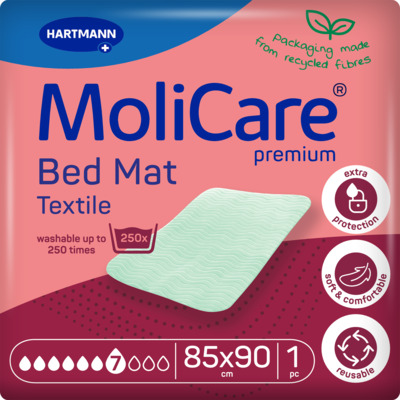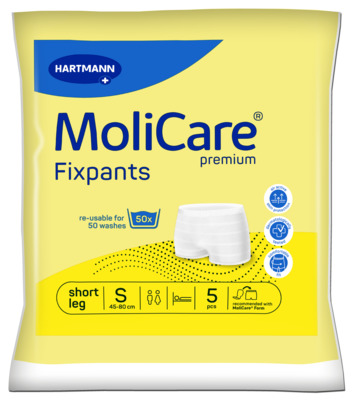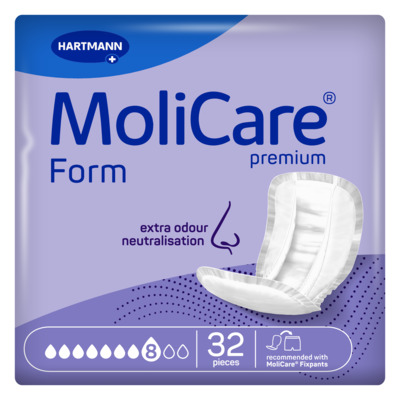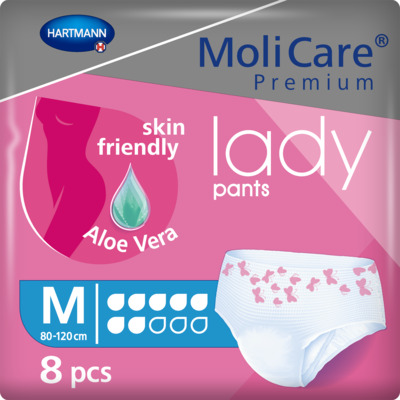Incontinence Advice
Diabetes and Incontinence: How To Stop Frequent Urination in Diabetes
Diabetes[1] is a complex metabolic condition that can significantly impact quality of life. In this article, we will discuss what diabetes is, the symptoms of diabetes, and the link between diabetes and incontinence. We will also explore the lifestyle adjustments that can be made to reduce your likelihood of developing the condition or, if you already have diabetes, prevent further complications from arising. It is always best to consult a healthcare professional or diabetes specialist for advice, as they can accurately assess your symptoms and recommend the most appropriate treatment.

What Is Diabetes?
Diabetes is a condition where the body's ability to process blood glucose, commonly known as blood sugar, is impaired. The hormone insulin, which is produced by the pancreas, is responsible for controlling the amount of sugar in the blood. This dysfunction can lead to elevated blood sugar levels, manifesting as various symptoms and causing conditions like incontinence.
There are two main forms of the condition:
● Type 1 diabetes: This is an autoimmune condition that causes the body to become unable to produce any insulin. Insulin is required to move the glucose in your blood and into your cells to be used as energy. This condition requires insulin supplementation due to the body's inability to produce the hormone.
● Type 2 diabetes: This arises when the body doesn’t produce enough insulin or cannot utilise insulin effectively. This means glucose stays in the blood and isn’t used as fuel for energy. This condition is often mitigated by a combination of dietary adjustments and medication.
Another type of diabetes, known as gestational diabetes, occurs in some pregnant women and tends to disappear following birth.
Prediabetes is the preliminary stage of type 2 diabetes, marked by increased blood sugar levels above the normal range but not high enough to be diagnosed with diabetes. It is often reversible with lifestyle modifications.
Type 2 diabetes can be caused by lifestyle factors, but genetics also plays a role, as certain people are more likely to develop the condition than others. Type 2 diabetes often develops later in life, but type 1 can develop at any age, including in young children. The surge in cases of type 2 diabetes correlates with rising obesity rates. Having diabetes can trigger secondary complications such as heart and kidney diseases, visual impairments and nerve damage, as continual raised blood sugar levels can cause problems over time. Because of differences in anatomy, the ways in which diabetes can affect the urinary system can differ between men and women.
Diabetes and Incontinence: How To Stop Frequent Urination in Diabetes
Symptoms Of Diabetes
Diabetes symptoms include:
- excessive thirst
urinating more frequently than normal, especially at night
feeling very tired
weight loss
blurred vision
cuts or wounds taking longer to heal
Learn more about nocturnal enuresis (nighttime urination).

The Link Between Diabetes And Incontinence
Having diabetes can impact the urinary and bowel systems, leading to various complications. They are commonly caused by high blood sugar levels over time leading to nerve damage (neuropathy), which can affect the nerves that control bladder and bowel function. Additionally, the relentless cycle of increased thirst and frequent urination due to elevated blood sugar levels can further exacerbate incontinence issues. Common urinary issues include:
Incontinence: This is the involuntary release of urine. If the nerves surrounding the bladder are damaged, it can be difficult to maintain control over bladder function.
Overactive bladder: Bladder muscles may spasm even when there is a minimal amount of urine, causing a sense of urgency to urinate.
Urinary tract infection (UTI): People with diabetes are more likely to have UTIs due to bacteria being able to grow better if there is sugar in the urine. Sometimes these infections can spread to the kidneys.
Kidney damage: Frequent UTIs can affect the kidneys, and high blood sugar levels can also damage the kidneys directly, impairing their ability to filter blood and produce urine.
Lifestyle Adjustments
Living well with diabetes involves a combination of medical care, lifestyle adjustments and a commitment to self-care. These can significantly reduce the likelihood of developing the complications that can arise from diabetes and, in early cases, prevent diabetes from occurring at all.
Recommended lifestyle adjustments include:
Eating a healthy diet: Include whole grains, fruits, vegetables, lean proteins, and healthy fats. A fibre-rich diet can prevent constipation, which is a common issue in diabetes. Limit refined sugars and processed foods. It is also important to have consistent meal times to regulate blood sugar levels. Learn more about bladder-cleansing foods that can aid bladder functioning.
Drinking well: Maintaining hydration is essential for diabetes and incontinence management. Drinking 6-8 glasses of water daily can prevent the bladder becoming irritated, while reducing caffeine, sugary beverages, and alcohol can decrease bladder irritation and help manage blood sugar levels. Drinking well can also help regulate bowel movements and prevent constipation. Learn more about bladder-friendly drinks that can aid bladder functioning.
Exercising regularly: Regular exercise is important to maintain overall health. It is important to seek guidance from your diabetes specialist for advice on maintaining safe blood sugar levels during exercise, especially if you use insulin injections.
Weight management: Keeping a healthy weight reduces pressure on the bladder and pelvic floor.
Stopping smoking: Smoking can increase insulin resistance and reduce blood flow, increasing your risk of developing diabetes and the complications that go with it.
Getting plenty of sleep: Sleep and adequate rest are good for maintaining overall health.
Pelvic floor exercises (otherwise known as Kegel exercises): These exercises can be very effective in improving continence. However, in the context of diabetes, it is worth being aware that if incontinence is due to nerve damage to the urinary system, they may not be so effective. It is important to consult a healthcare professional or a physiotherapist for tailored advice.
Bladder retraining: This involves documenting urination times to gradually extend intervals between toilet visits, enhancing bladder capacity and control. Scheduled toilet breaks can pre-empt the urgency and frequency of urination. However, it may be difficult to treat incontinence in this way due to nerve damage from diabetes. It is important to consult a healthcare professional or a physiotherapist for tailored advice.

Treatments For Diabetes
Getting tested for diabetes is important, as being diagnosed early can prevent many of the health complications of the condition, and a treatment plan involving regular blood sugar level monitoring can be started early. Keeping your blood sugar levels well-controlled is the best way to prevent nerve damage or further complications from happening. Common complications of diabetes include diabetic retinopathy, where the eyes can become damaged from diabetes, and diabetic neuropathy, which can cause foot problems such as sores and infections, so regular screening is recommended.
Treatment depends on the type of diabetes you have. Type 2 diabetes can be managed by lifestyle adjustments and monitoring your blood sugar levels. You may also need medication if the condition progresses. Type 1 diabetes requires regular insulin injections to keep blood sugar levels normal. It is important to be regularly reviewed by healthcare professionals to prevent further complications.
Treatments And Management Of Incontinence
It is important to talk to a healthcare professional about any symptoms of incontinence, as they can determine if your symptoms are directly related to diabetes or if there is another underlying cause. They can also recommend the appropriate method to treat or manage your symptoms. There are many different methods to treat and manage incontinence, and, depending on the cause, incontinence can be completely cured.
Medicinal Treatments For Incontinence
If lifestyle changes or pelvic floor exercises haven’t worked, then medication is another option to treat incontinence. There are different types of medication to treat incontinence. For example, some medications can prevent spasms in the bladder muscles that can cause incontinence. For recurrent UTIs, a long-term, low-dose antibiotic regimen might be recommended. To combat bowel problems, over-the-counter laxatives can relieve constipation, thus preventing overflow incontinence.
Catheters
Occasionally, catheters can be used to manage incontinence when other methods haven’t worked. These can be used as short-term or long-term solutions and are usually used when someone is unable to empty their bladder to prevent urine backing up to the kidneys. Catheters can cause infection, and they require regular monitoring and care. Sometimes, as a long-term solution, a suprapubic catheter can be used for urinary retention, which involves having a tube inserted through the abdomen directly into the bladder. This reduces the risk of bladder infection and can be more preferable for the individual long-term.
Accessibility Aids
Accessibility aids like a toilet card to discreetly request access toilets when in cafes or shopping or a RADAR key to access disabled public toilets, alleviating stress and improving mobility for those with incontinence. These aids ensure that individuals can manage their condition discreetly and efficiently while on the move. Order a free MoliCare Pack for more tips, advice and a free toilet card.
Incontinence Products
Using incontinence products like pads and absorbent underwear for day and night can significantly improve the quality of life for those with incontinence. These products provide security, prevent leaks, and allow individuals to engage in daily activities confidently.
Stop Frequent Urination and Diabetes Alongside Managing Incontinence
In conclusion, managing incontinence with diabetes can be challenging. However, making the most of the advice and assistance available, including medicinal and practical continence mitigations (such as continence pad usage), can ensure optimal care and improve quality of life for those affected.
FAQs
What is the best way to reduce my chances of developing diabetes complications?
People with diabetes can live healthy lives by managing their blood sugar levels, maintaining a healthy diet, exercising regularly, and adhering to treatment plans prescribed by healthcare professionals.
Is diabetes your own fault?
Having diabetes is not solely your fault; it results from a combination of genetic, environmental, and lifestyle factors. While choices like diet and exercise can influence its development, genetic predispositions also play a significant role.
Can too much sugar cause incontinence?
An excessive sugar intake over a long period of time can lead to diabetes, which can then lead to incontinence as high blood sugar levels can damage nerves which can then affect bladder control. Too much sugar can also contribute to obesity, which also increases incontinence risk.
Sources
NHS. (n.d.) Diabetes. [online] Available at: https://www.nhs.uk/conditions/diabetes/ [accessed 12/03/24]
Diabetes.co.uk. (n.d.) Getting tested for diabetes. [online] Available at: https://www.diabetes.org.uk/diabetes-the-basics/test-for-diabetes [accessed 12/03/24]
Bladder & Bowel Community. (2024). Just Can’t Wait Card. [online] Available at: https://www.bladderandbowel.org/help-information/just-cant-wait-card/ [accessed 12/03/24]
Disability Rights UK. (2023). RADAR Key. [online] Available at: https://shop.disabilityrightsuk.org/products/radar-key [accessed 12/03/24]
Diabetes UK. (2024) Getting Tested for Diabetes. [online] Available at: https://www.diabetes.org.uk/diabetes-the-basics/test-for-diabetes [accessed 12/03/24]

MoliCare® Premium Bed Mat Textile 7 drops
<p>The MoliCare® Premium Bed Mat Textile is our economic and durable water resistant mattress protector designed to make daily life with incontinence easier.</p>
MoliCare® Premium Fixpants Short Leg
<h2>Washable and durable</h2> <p>Embrace the convenience of washable and durable fixpants, designed to provide the best support and fit for your needs. These fixation pants are suitable for both women and men, providing a safe and secure hold for larger incontinence pads. With the two-piece system, you can trust that your pads will stay securely in place.</p> <p>Crafted from ladder-resistant dense material, these fixpants maintain their durability and integrity while keeping the pad's wetness indicator clearly visible. You can count on these pants to provide long-lasting support and comfort, for day and nightwear.</p> <h2>Skin-friendly and air-active material</h2> <p>Enjoy a high level of comfort with the soft waistband, skin-friendly and air-active material, and cross-elasticated threads for a close and comfortable fit.</p> <p>Experience optimum comfort with a choice of different leg lengths, ensuring you find the ideal fit that suits your body shape and preferences.</p> <p>With MoliCare® Premium Fixpants, you have a reliable and comfortable solution for keeping larger incontinence pads securely in place. Embrace the confidence and convenience of washable fixation pants, designed to provide the best support and fit for your needs. Say goodbye to worries and discomfort, and say hello to worry-free and comfortable days with MoliCare® Premium Fixpants.</p> <h2>Choosing your Size</h2> <p>Measure waist at the largest width between the waist and hips. Select the product size based on the below sizing.</p> <ul> <li>Small: 16-32 inches (45-80cm)</li> <li>Medium: 24-40 inches (60-100cm)</li> <li>Large: 32-48 inches (80-120cm)</li> <li>Extra Large: 40-64 inches (100-160cm)</li> </ul> <h2>Reliable delivery</h2> <p>We take care in the transportation of our products straight to your doorstep. Order from us and we will dispatch your items within 2-5 working days, and if you order over £50, you will receive free delivery.</p> <p>So stay comfortable during your everyday activities with the MoliCare® Premium Fixpants short leg range.</p>
MoliCare® Premium Form 8 Drops
<h2>Dermatologically tested incontinence pads</h2> <p>Experience comfort and protection against bladder weakness with MoliCare® Premium Form 8 Drops Pads. These pads are designed to provide you with exceptional comfort, tailored to your body's shape. Offering a range of absorbencies, they ensure the right level of protection for moderate to very severe incontinence. With elasticated seams to prevent urine from escaping from the side of the pad, these pads provide added security against leakages.</p> <h2>Absorbent Core Technology</h2> <p>At the core of these soft and breathable pads lies MoliCare®'s unique absorbent core technology, which effectively draws moisture away from your body, leaving your skin feeling dry. The soft textile-like backing sheet reduces rustling noise, while integrated odour neutralisers keep you feeling fresh and confident throughout the day. Dermatologically tested, we recommend pairing the MoliCare® Premium Form 8 Drops with our <a href="https://www.hartmanndirect.co.uk/incontinence-products/large-pads-and-fixation-pants" style="color:#0563c1; text-decoration:underline">fixation pants</a> for all-day comfort and security.</p> <h2>Convenient incontinence products</h2> <p>No matter the level of incontinence you experience, MoliCare® Premium Form 8 Drop Pads offer a convenient solution to confidently manage your needs. You can easily order our products online with the assurance of our price match promise and delivery straight to your doorstep. Enjoy free delivery on all orders over £50.</p> <p>If you require further assistance, our knowledgeable customer care team is available to answer any questions you may have. Contact us today at 0800 028 9470 and regain control of your life with MoliCare® Premium Form 8 Drops Pads.</p> <p>*Based on a study conducted among German nursing homes in 2021.</p>
